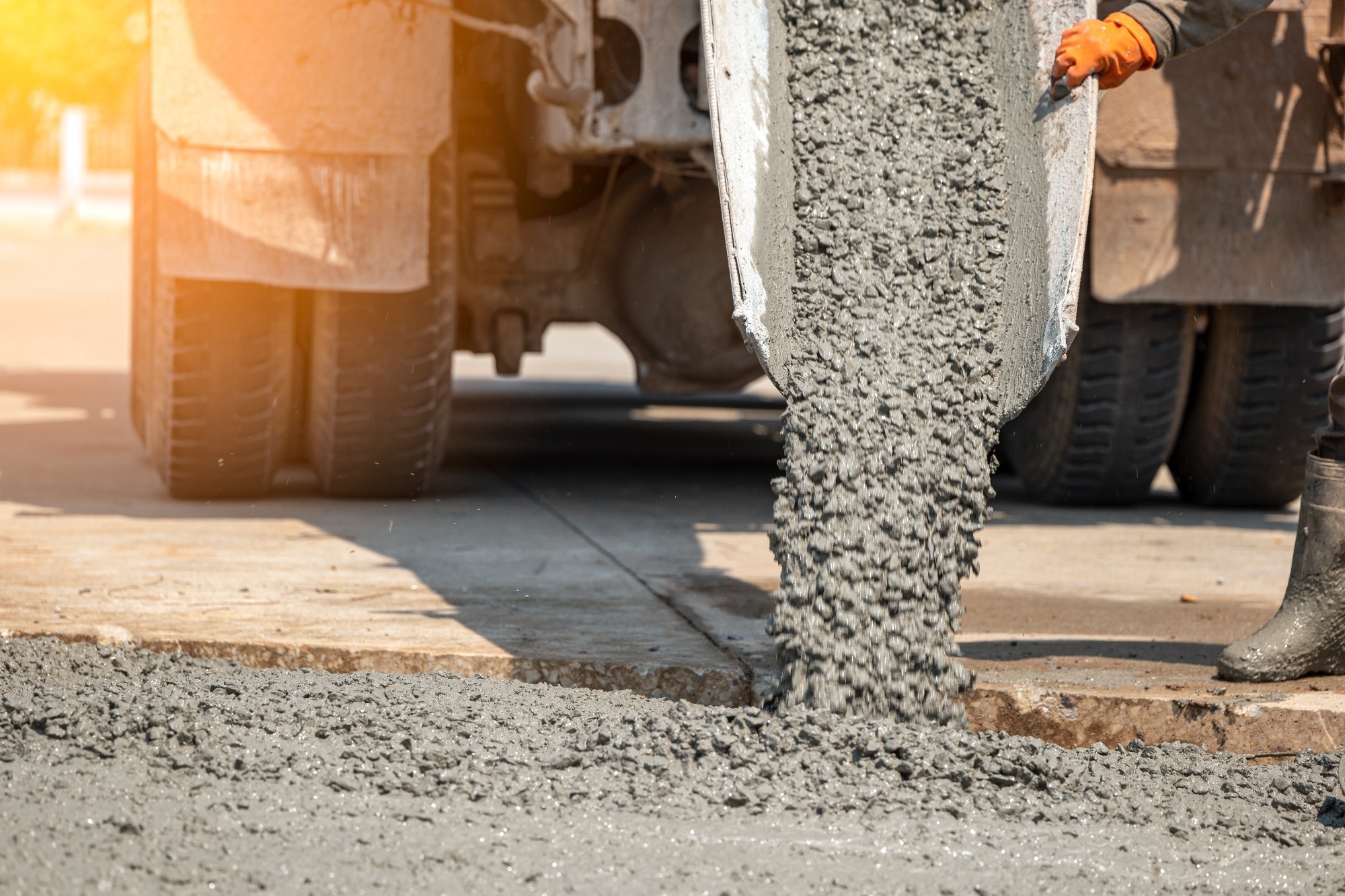A recent study has demonstrated a practical method for producing cost-effective, high-performance concrete by using waste rock from tunnel excavation, reinforced with basalt or steel fibers. This approach addresses growing material shortages and environmental concerns in the construction industry, while making use of resources that would otherwise go to waste.
 Study: Comparative study on the properties of basalt and steel fiber reinforcement waste rock concrete. Image Credit: touch1976/Shutterstock.com
Study: Comparative study on the properties of basalt and steel fiber reinforcement waste rock concrete. Image Credit: touch1976/Shutterstock.com
Why This Matters
Concrete production depends heavily on natural sand and gravel, but these resources are becoming increasingly scarce. At the same time, infrastructure projects - especially highway tunnels - generate large volumes of waste rock that are typically discarded. In China, for instance, most of this excavated material, composed mainly of limestone and dolomitic limestone, ends up unused in quarries.
This research investigates whether crushed waste rock can serve as a substitute for natural aggregates, and whether adding fibers can compensate for the resulting changes in concrete strength and workability.
Approach and Materials
To test this idea, the researchers prepared concrete mixes using a binder made of cement and fly ash. The coarse and fine aggregates consisted of crushed waste rock collected from a tunnel project along the Luxi–Qubei–Guangnan–Funing Expressway, with a limestone-to-dolomitic limestone ratio of 16:9. A polycarboxylic superplasticizer was added to improve the mix’s consistency and reduce shrinkage.
The core variable in the study was fiber reinforcement. Two types were tested:
- Basalt fibers (24 mm), added at 1, 2, and 3 kg/m3 (labeled BF01, BF02, BF03)
- Steel fibers (35 mm, hooked ends), added at 20, 40, and 60 kg/m3 (labeled SF20, SF40, SF60)
All mixes were designed to achieve C50 concrete strength. A control mix with no fiber (JF50) was used as a baseline.
Once prepared, the fresh concrete was assessed for slump, a key measure of workability. After curing for 7 and 28 days, hardened samples were tested for:
- Compressive strength (UCS)
- Split tensile strength (STS)
- Flexural strength (FS)
- P-wave velocity, to assess internal density and integrity
To understand the material behavior at a microscopic level, scanning electron microscopy (SEM) was also used to examine the concrete’s internal structure and the interaction between fibers and the matrix.
Key Findings
This study set out to evaluate the performance, cost-efficiency, and structural viability of using waste rock as a full replacement for natural aggregates in concrete, particularly when combined with fiber reinforcement. The results highlight how different fiber types and dosages influence workability, strength, and long-term durability, as well as the overall economic and environmental impact.
Adding fibers to the concrete mix led to a modest reduction in slump, signaling lower workability. Despite this, all mixes stayed within acceptable limits for structural applications. Both basalt and steel fibers contributed to improved mechanical performance up to an optimal dosage. Beyond that point, performance began to decline, likely due to poor fiber dispersion and clustering. Interestingly, compressive strength in basalt fiber mixes continued to increase even at the highest dosage tested.
The behavior of each fiber type also influenced how cracks formed and propagated. Basalt fibers dispersed uniformly and helped create a mesh-like reinforcement that resisted cracking. Steel fibers, with their longer length and hooked ends, were particularly effective at bridging cracks under tension. Both types of fibers bonded well with the cement matrix, enhancing the concrete’s internal cohesion.
Cost analysis revealed a clear advantage to using waste rock. Replacing natural aggregates reduced overall material costs by 25.5 %. Even with added fibers, the most fiber-rich basalt mix (BF03) retained a 12.6 % cost advantage over the control. Among all combinations, the BF02 mix (2 kg/m3 of basalt fiber) delivered the best performance-to-cost ratio, reducing the cost per unit strength by 7.3 % (splitting tensile) and 5.2 % (flexural).
In contrast, steel fiber mixes were significantly more expensive. The lowest steel fiber dosage (SF20) increased costs by nearly 40 %, while mid-range dosages like SF40 more than doubled the cost per unit strength. These results make a strong case for basalt fiber as the more practical and scalable option.
Microstructural analysis supported the mechanical findings. SEM imaging showed that basalt fibers enhanced hydration and improved matrix density, contributing to better durability and long-term performance, especially in the BF02 mix.
Final Assessment
In summary, the study confirms that waste rock can effectively replace natural aggregates in structural concrete when paired with fiber reinforcement. While steel fibers delivered higher peak strengths, basalt fibers offered a more balanced outcome in terms of strength, durability, and cost. A 2 kg/m3 dosage of basalt fiber stood out as the most efficient and sustainable option.
This approach offers a compelling solution for regions facing limited natural resources and high volumes of excavation waste.
Journal Reference
Xu, J. et al. (2025). Comparative study on the properties of basalt and steel fiber reinforcement waste rock concrete. Scientific Reports, 15(1). DOI: 10.1038/s41598-025-99292-2, https://www.nature.com/articles/s41598-025-99292-2
Disclaimer: The views expressed here are those of the author expressed in their private capacity and do not necessarily represent the views of AZoM.com Limited T/A AZoNetwork the owner and operator of this website. This disclaimer forms part of the Terms and conditions of use of this website.